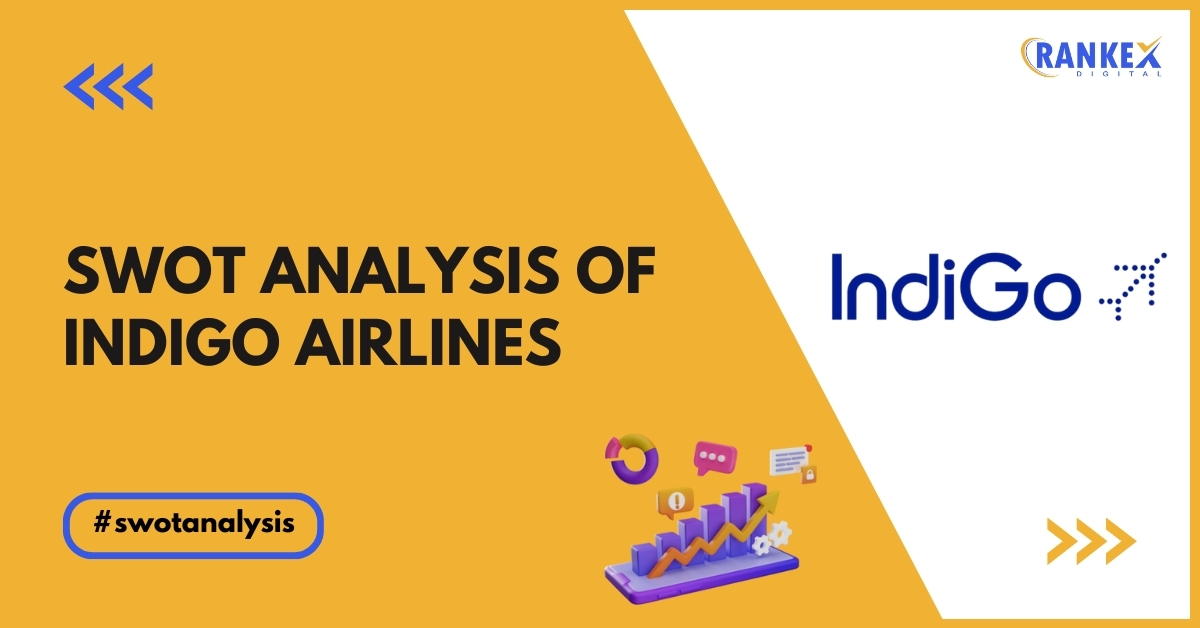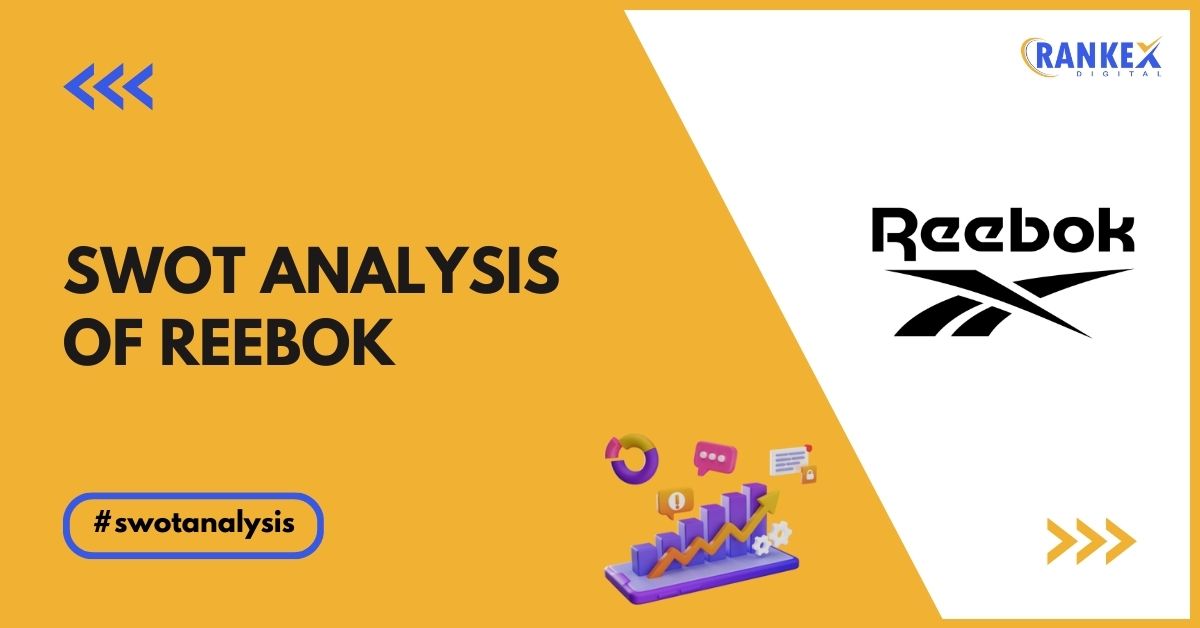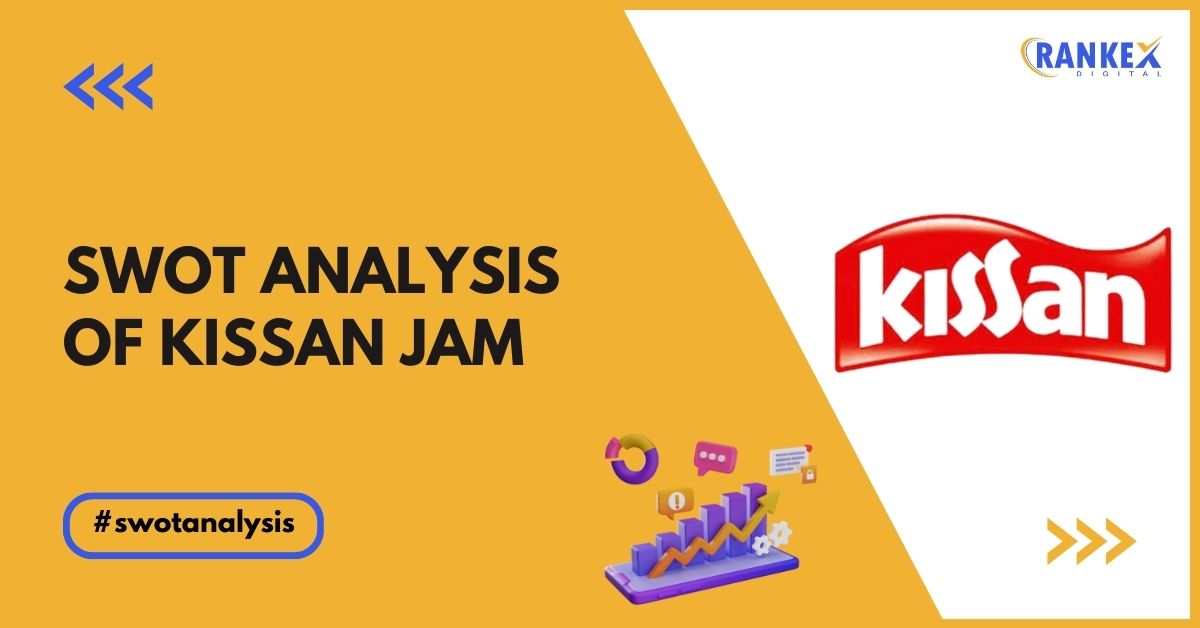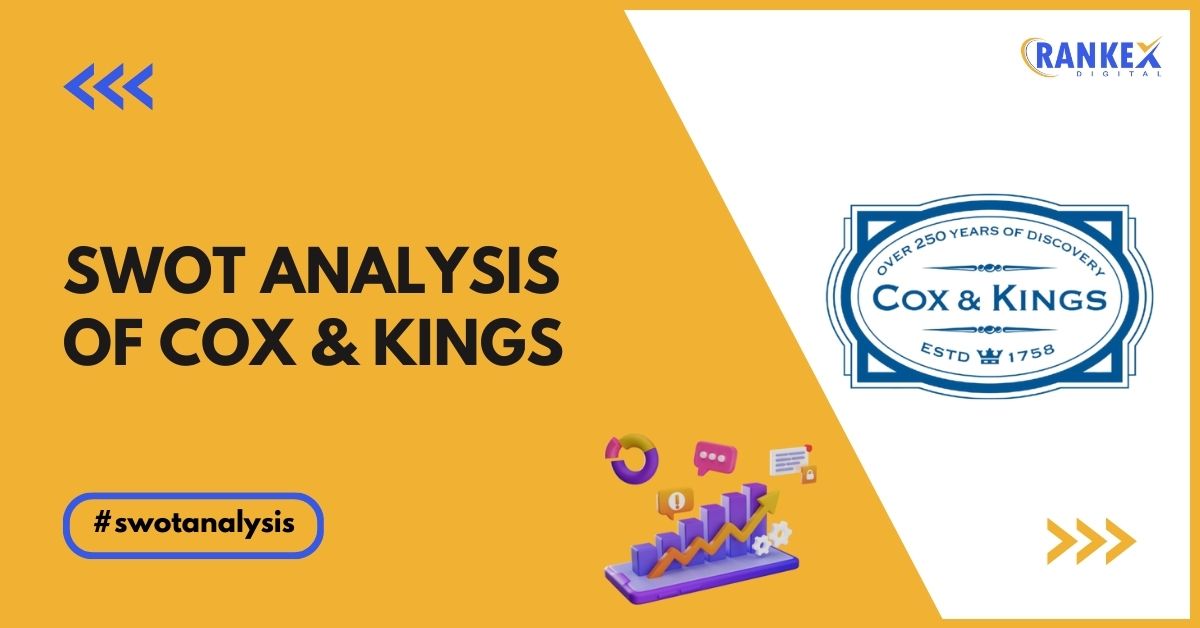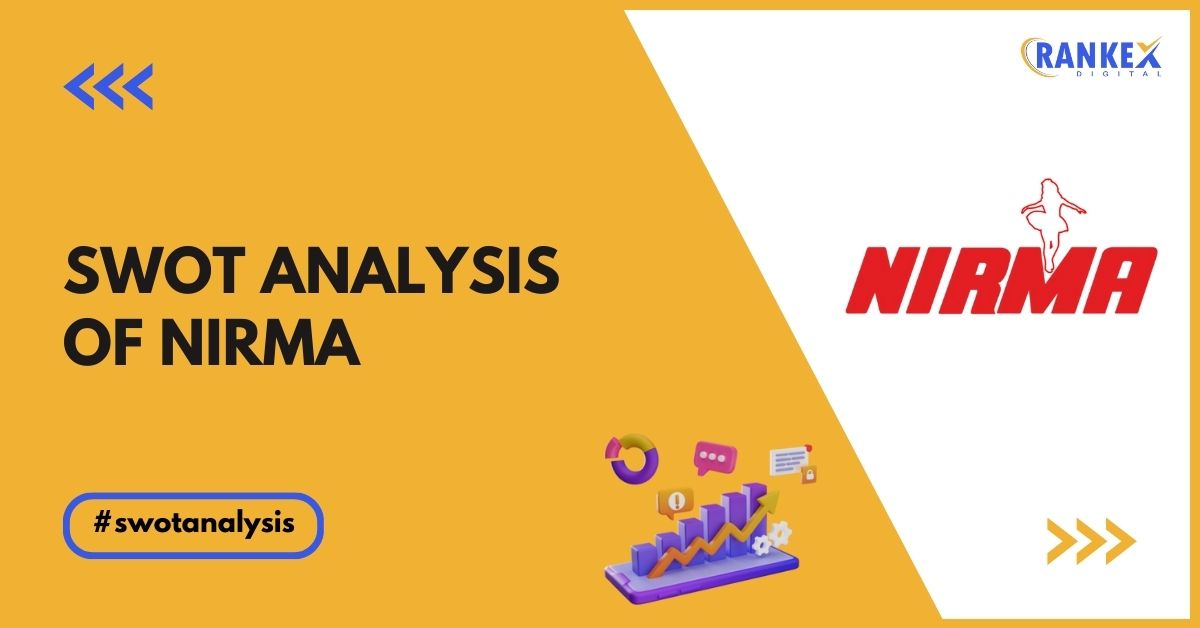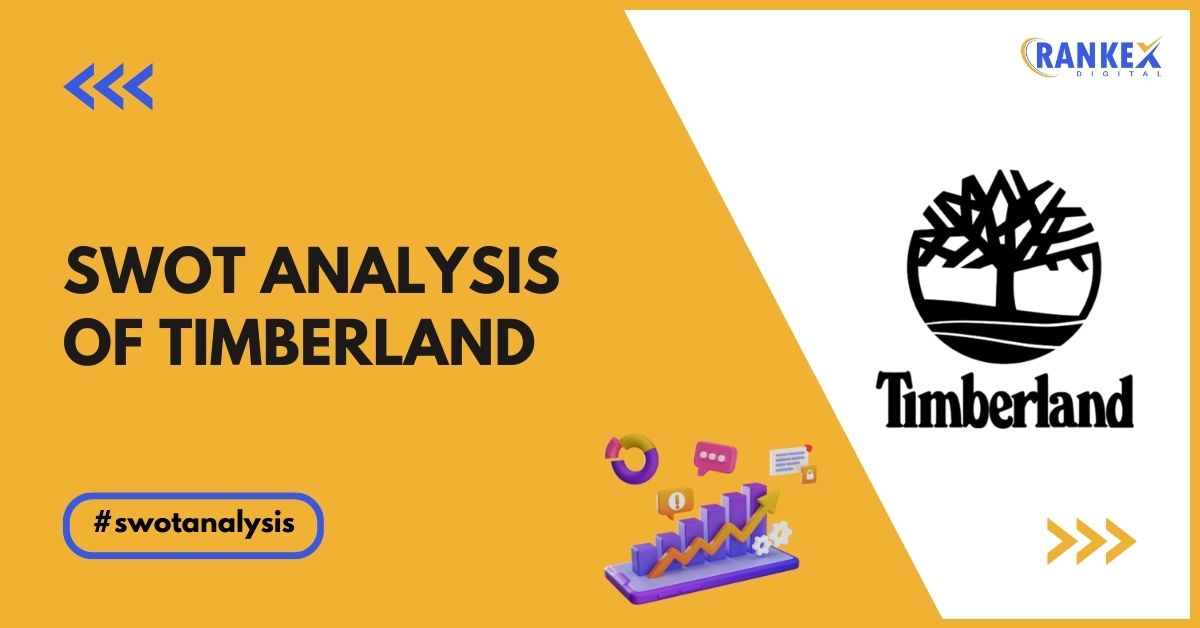IndiGo Airlines, India’s largest airline by market share, has significantly shaped the domestic aviation landscape. Since its inception in 2006, IndiGo has stood out for its budget-friendly operations, operational efficiency, and punctuality, becoming the preferred airline for millions.
In this article, we present a SWOT analysis of IndiGo Airlines, examining its strengths, weaknesses, opportunities, and threats.
Table of Contents
Overview of IndiGo Airlines
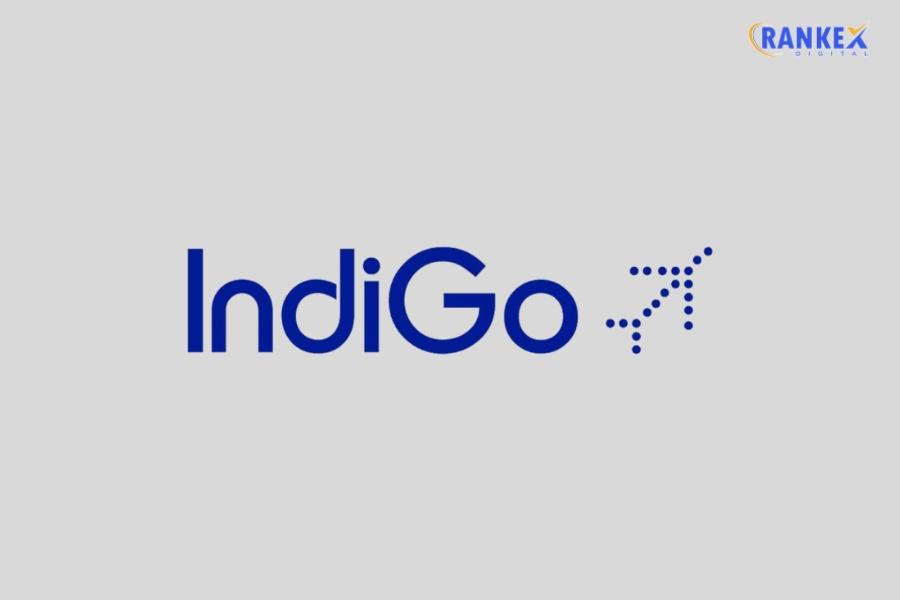
IndiGo Airlines was founded in 2006 by Rahul Bhatia and Rakesh Gangwal and operates as a low-cost carrier headquartered in Gurgaon, Haryana, India. Known for offering efficient, on-time services and economical fares, IndiGo has become a key player in Indian aviation.
With a modern fleet size exceeding 300 aircraft, IndiGo covers more than 100 domestic and international destinations. The airline is distinguished by its cost-effective operations, extensive route network, and consistent growth strategy, making it a notable competitor in the low-cost carrier segment globally.
Quick Stats About IndiGo Airlines
| Founder | Rahul Bhatia and Rakesh Gangwal |
|---|---|
| Year Founded | 2006 |
| Headquarters | Gurgaon, Haryana, India |
| No. of Employees | 30,000+ |
| CEO | Pieter Elbers |
| Company Type | Public |
| Fleet Size | 300+ |
| Market Share in India | 56% |
| Key International Routes | Middle East, Southeast Asia, Europe |
Current News of IndiGo Airlines
- Expansion into International Markets: IndiGo is expanding its international reach, with new routes to Southeast Asia and the Middle East.
- Fleet Modernization: IndiGo has recently invested in fuel-efficient Airbus A320neo aircraft, reducing carbon emissions and fuel costs.
- Sustainable Initiatives: IndiGo has launched initiatives to reduce environmental impact, including single-use plastic reduction and improved waste management.
- Partnership with Codeshare Airlines: IndiGo has established codeshare agreements with airlines like Qatar Airways to expand its international network and enhance connectivity.
SWOT Analysis of IndiGo Airlines
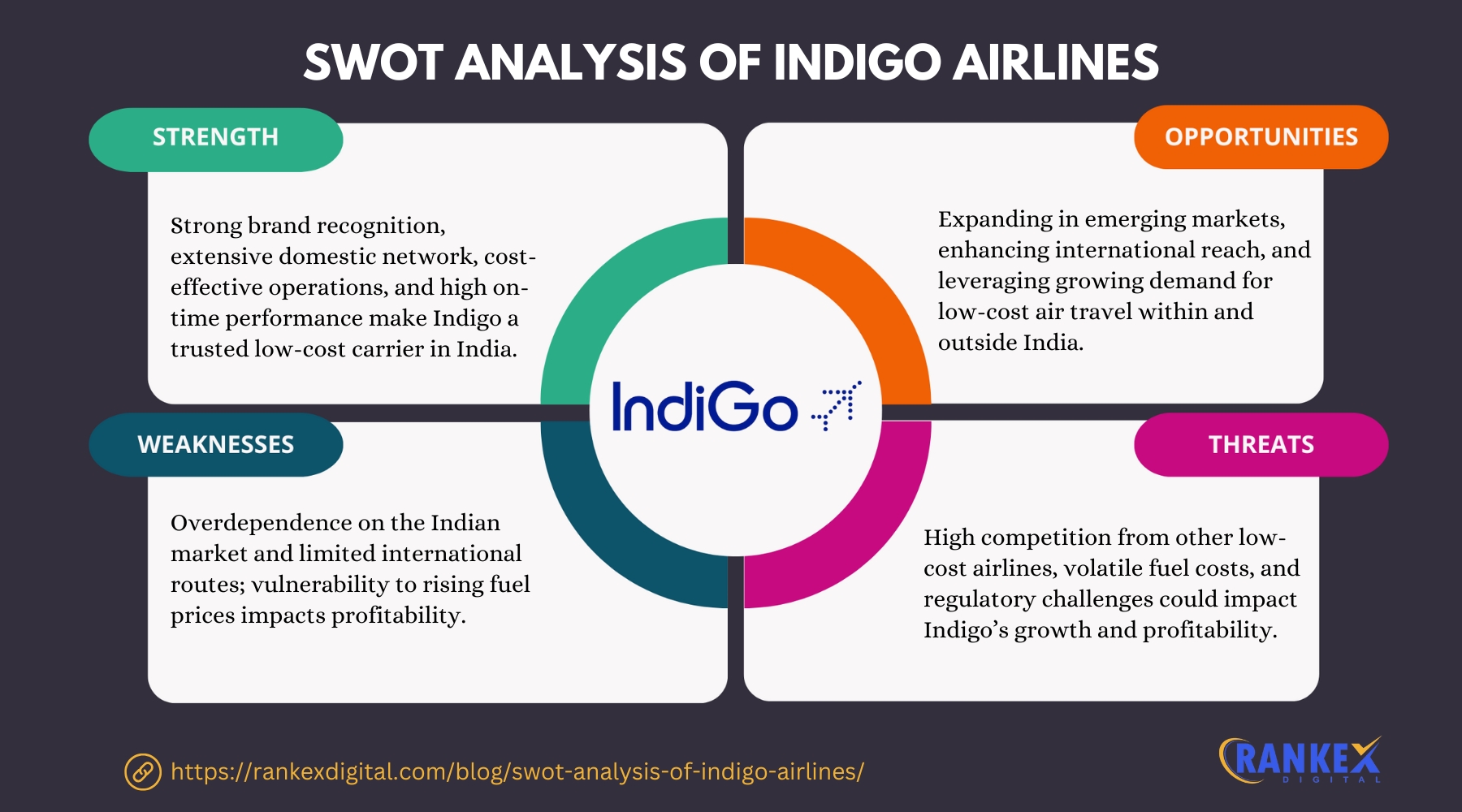
Strengths of IndiGo Airlines
- Strong Market Position: IndiGo dominates the Indian aviation sector, with over 56% market share of domestic flights. This leadership offers IndiGo a competitive advantage, as it can influence ticket pricing, route selection, and customer loyalty. The large market share also creates leverage with suppliers and stakeholders, ensuring more favorable terms.
- Cost-Efficiency: IndiGo’s low-cost business model keeps operational costs down, allowing for competitive fares that appeal to a wide range of customers. This approach is achieved by optimizing routes, using fuel-efficient aircraft, and minimizing unnecessary services, all of which contribute to lower ticket prices and high demand.
- Large, Modern Fleet: IndiGo operates one of the youngest and most fuel-efficient fleets in the country. By continuously modernizing their aircraft, IndiGo minimizes maintenance costs and reduces fuel consumption. The newer fleet also aligns with sustainability efforts and attracts eco-conscious travelers.
- Strong Brand Reputation: Known for punctuality, reliability, and quality service, IndiGo has built a solid brand reputation that makes it the preferred airline for many travelers in India. This reputation boosts customer loyalty, aiding IndiGo in maintaining its dominant market position.
- Effective Management: IndiGo’s management focuses on profitable growth and market expansion, balancing cost-effectiveness with strategic investments. This leadership consistency helps IndiGo grow sustainably, expanding into new markets and strengthening its market share.
Weaknesses of IndiGo Airlines
- Dependence on the Domestic Market: IndiGo’s primary revenue source is the Indian market, which makes it vulnerable to economic downturns in India. If the domestic economy faces challenges, travel demand may decline, impacting IndiGo’s revenue significantly.
- Limited Premium Services: As a low-cost carrier, IndiGo provides limited luxury or business-class options. While cost-effective, this lack of premium services may limit IndiGo’s appeal to high-end travelers or corporate customers seeking premium in-flight experiences.
- High Operating Costs: Despite being a low-cost airline, IndiGo incurs high operating costs from factors like fuel prices and aircraft maintenance. Fuel price volatility, in particular, can affect profitability as the airline may struggle to keep ticket prices low while covering rising fuel expenses.
- Staff Retention Challenges: The airline industry faces high turnover rates, especially among skilled personnel such as pilots and cabin crew. IndiGo experiences difficulties in retaining experienced staff, which could impact service quality and operational stability.
- Limited Brand Differentiation Internationally: IndiGo’s brand is primarily recognized within India as a low-cost carrier, which may not attract international travelers seeking premium or unique experiences. This may hinder its international market expansion and brand perception outside of India.
Opportunities for IndiGo Airlines
- International Expansion: IndiGo has significant potential to grow in underserved international markets, particularly in regions like Southeast Asia and the Middle East, where there is a strong demand for affordable flights. Expanding internationally could diversify revenue streams and reduce dependency on the Indian market.
- Increased Tourism in India: India is becoming a major tourist destination, and IndiGo can benefit from the influx of inbound travelers. With strategic marketing and route expansion, IndiGo can cater to both international tourists and domestic travelers exploring new destinations within India.
- Fleet Modernization: Investing in newer, fuel-efficient aircraft not only reduces operating costs but also aligns with global environmental goals. This fleet modernization effort can enhance IndiGo’s appeal to eco-conscious travelers and mitigate the impact of fluctuating fuel costs.
- Expanding Cargo Services: The post-pandemic increase in demand for air freight provides an opportunity for IndiGo to venture into cargo services. This would offer a new revenue stream that is less dependent on passenger demand, adding resilience to the business.
- Digital Transformation: Adopting advanced digital solutions across bookings, customer service, and operations can elevate the customer experience. Streamlining these processes could improve efficiency, reduce costs, and provide IndiGo with a competitive edge in the market.
Threats to IndiGo Airlines
- Rising Fuel Costs: Fuel is one of the largest expenses for airlines, and price fluctuations can erode profit margins. IndiGo, like other airlines, must manage these costs carefully, but a major spike in fuel prices could lead to reduced profitability and higher ticket prices.
- Intense Competition: IndiGo faces pressure from both domestic and international low-cost carriers. The competition forces IndiGo to maintain low fares, which can reduce profit margins. Additionally, any new entrant or aggressive pricing strategy by competitors can challenge IndiGo’s market share.
- Economic Slowdowns: Economic downturns reduce consumer spending, directly impacting travel demand. The COVID-19 pandemic demonstrated how quickly demand can drop, affecting IndiGo’s revenue. Future economic slowdowns would similarly present risks to financial stability.
- Regulatory Challenges: The aviation industry is subject to complex and varying regulations, both domestically and internationally. Regulatory compliance requires time and resources, and sudden changes can hinder IndiGo’s operational efficiency and expansion plans.
- Environmental Concerns: The increasing awareness of climate change is prompting stricter regulations and a greater need for sustainable practices. IndiGo may need to invest in sustainability initiatives, which could raise operational costs and potentially impact profitability if not managed strategically.
Top Competitors of IndiGo Airlines
Conclusion
The SWOT analysis of IndiGo Airlines highlights the airline’s solid market position, operational efficiency, and growth opportunities in the aviation sector. However, IndiGo also faces challenges, such as intense competition, high operational costs, and regulatory complexities.
By leveraging its strengths and capitalizing on emerging opportunities while addressing weaknesses and external threats, IndiGo can continue to strengthen its foothold in both domestic and international markets.
Frequently Asked Questions
What makes IndiGo Airlines stand out in the Indian aviation industry?
IndiGo Airlines is known for its cost-effective operations, punctuality, and extensive domestic network, making it the largest airline in India by market share.
What are some of IndiGo Airlines’ weaknesses?
Some weaknesses include a heavy reliance on the domestic market, limited premium services, high operational costs, and challenges with employee retention.
What are the opportunities for IndiGo Airlines to expand internationally?
IndiGo has opportunities to expand into international markets, particularly in the Middle East and Southeast Asia, and is forming codeshare partnerships to broaden its network.
How does IndiGo manage to keep its operating costs low?
IndiGo keeps costs low through a lean operational model, investing in fuel-efficient aircraft, and optimizing routes and services to maximize efficiency.
What challenges does IndiGo face due to environmental concerns?
IndiGo, like other airlines, faces regulatory pressure to reduce carbon emissions and adopt sustainable practices, which could increase operational costs.

